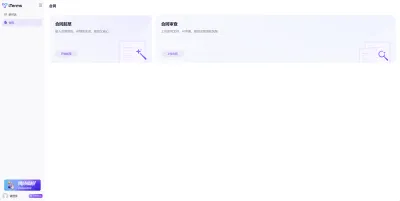.. figure:: https://github.com/pybind/pybind11/raw/master/docs/pybind11-logo.png :alt: pybind11 logo
pybind11 — Seamless operability between C++11 and Python
|Latest Documentation Status| |Stable Documentation Status| |Gitter chat| |GitHub Discussions| |CI| |Build status|
|Repology| |PyPI package| |Conda-forge| |Python Versions|
Setuptools example <https://github.com/pybind/python_example>_
• Scikit-build example <https://github.com/pybind/scikit_build_example>_
• CMake example <https://github.com/pybind/cmake_example>_
.. start
pybind11 is a lightweight header-only library that exposes C++ types
in Python and vice versa, mainly to create Python bindings of existing
C++ code. Its goals and syntax are similar to the excellent
Boost.Python <http://www.boost.org/doc/libs/1_58_0/libs/python/doc/>_
library by David Abrahams: to minimize boilerplate code in traditional
extension modules by inferring type information using compile-time
introspection.
The main issue with Boost.Python—and the reason for creating such a similar project—is Boost. Boost is an enormously large and complex suite of utility libraries that works with almost every C++ compiler in existence. This compatibility has its cost: arcane template tricks and workarounds are necessary to support the oldest and buggiest of compiler specimens. Now that C++11-compatible compilers are widely available, this heavy machinery has become an excessively large and unnecessary dependency.
Think of this library as a tiny self-contained version of Boost.Python with everything stripped away that isn't relevant for binding generation. Without comments, the core header files only require ~4K lines of code and depend on Python (3.8+, or PyPy) and the C++ standard library. This compact implementation was possible thanks to some C++11 language features (specifically: tuples, lambda functions and variadic templates). Since its creation, this library has grown beyond Boost.Python in many ways, leading to dramatically simpler binding code in many common situations.
Tutorial and reference documentation is provided at
pybind11.readthedocs.io <https://pybind11.readthedocs.io/en/latest>.
A PDF version of the manual is available
here <https://pybind11.readthedocs.io/_/downloads/en/latest/pdf/>.
And the source code is always available at
github.com/pybind/pybind11 <https://github.com/pybind/pybind11>_.
Core features
pybind11 can map the following core C++ features to Python:
- Functions accepting and returning custom data structures per value, reference, or pointer
- Instance methods and static methods
- Overloaded functions
- Instance attributes and static attributes
- Arbitrary exception types
- Enumerations
- Callbacks
- Iterators and ranges
- Custom operators
- Single and multiple inheritance
- STL data structures
- Smart pointers with reference counting like
std::shared_ptr - Internal references with correct reference counting
- C++ classes with virtual (and pure virtual) methods can be extended in Python
- Integrated NumPy support (NumPy 2 requires pybind11 2.12+)
Goodies
In addition to the core functionality, pybind11 provides some extra goodies:
-
Python 3.8+, and PyPy3 7.3 are supported with an implementation-agnostic interface (pybind11 2.9 was the last version to support Python 2 and 3.5).
-
It is possible to bind C++11 lambda functions with captured variables. The lambda capture data is stored inside the resulting Python function object.
-
pybind11 uses C++11 move constructors and move assignment operators whenever possible to efficiently transfer custom data types.
-
It's easy to expose the internal storage of custom data types through Pythons' buffer protocols. This is handy e.g. for fast conversion between C++ matrix classes like Eigen and NumPy without expensive copy operations.
-
pybind11 can automatically vectorize functions so that they are transparently applied to all entries of one or more NumPy array arguments.
-
Python's slice-based access and assignment operations can be supported with just a few lines of code.
-
Everything is contained in just a few header files; there is no need to link against any additional libraries.
-
Binaries are generally smaller by a factor of at least 2 compared to equivalent bindings generated by Boost.Python. A recent pybind11 conversion of PyRosetta, an enormous Boost.Python binding project,
reported <https://graylab.jhu.edu/Sergey/2016.RosettaCon/PyRosetta-4.pdf>_ a binary size reduction of 5.4x and compile time reduction by 5.8x. -
Function signatures are precomputed at compile time (using
constexpr), leading to smaller binaries. -
With little extra effort, C++ types can be pickled and unpickled similar to regular Python objects.
Supported compilers
- Clang/LLVM 3.3 or newer (for Apple Xcode's clang, this is 5.0.0 or newer)
- GCC 4.8 or newer
- Microsoft Visual Studio 2017 or newer
- Intel classic C++ compiler 18 or newer (ICC 20.2 tested in CI)
- Cygwin/GCC (previously tested on 2.5.1)
- NVCC (CUDA 11.0 tested in CI)
- NVIDIA PGI (20.9 tested in CI)
About
This project was created by Wenzel Jakob <http://rgl.epfl.ch/people/wjakob>_. Significant features and/or
improvements to the code were contributed by Jonas Adler, Lori A. Burns,
Sylvain Corlay, Eric Cousineau, Aaron Gokaslan, Ralf Grosse-Kunstleve, Trent Houliston, Axel
Huebl, @hulucc, Yannick Jadoul, Sergey Lyskov, Johan Mabille, Tomasz Miąsko,
Dean Moldovan, Ben Pritchard, Jason Rhinelander, Boris Schäling, Pim
Schellart, Henry Schreiner, Ivan Smirnov, Boris Staletic, and Patrick Stewart.
We thank Google for a generous financial contribution to the continuous integration infrastructure used by this project.
Contributing
See the `contributing
guide <https://github.com/pybind/pybind11/blob/master/.github/CONTRIBUTING.md>`_
for information on building and contributing to pybind11.
License
~~~~~~~
pybind11 is provided under a BSD-style license that can be found in the
`LICENSE <https://github.com/pybind/pybind11/blob/master/LICENSE>`_
file. By using, distributing, or contributing to this project, you agree
to the terms and conditions of this license.
.. |Latest Documentation Status| image:: https://readthedocs.org/projects/pybind11/badge?version=latest
:target: http://pybind11.readthedocs.org/en/latest
.. |Stable Documentation Status| image:: https://img.shields.io/badge/docs-stable-blue.svg
:target: http://pybind11.readthedocs.org/en/stable
.. |Gitter chat| image:: https://img.shields.io/gitter/room/gitterHQ/gitter.svg
:target: https://gitter.im/pybind/Lobby
.. |CI| image:: https://github.com/pybind/pybind11/workflows/CI/badge.svg
:target: https://github.com/pybind/pybind11/actions
.. |Build status| image:: https://ci.appveyor.com/api/projects/status/riaj54pn4h08xy40?svg=true
:target: https://ci.appveyor.com/project/wjakob/pybind11
.. |PyPI package| image:: https://img.shields.io/pypi/v/pybind11.svg
:target: https://pypi.org/project/pybind11/
.. |Conda-forge| image:: https://img.shields.io/conda/vn/conda-forge/pybind11.svg
:target: https://github.com/conda-forge/pybind11-feedstock
.. |Repology| image:: https://repology.org/badge/latest-versions/python:pybind11.svg
:target: https://repology.org/project/python:pybind11/versions
.. |Python Versions| image:: https://img.shields.io/pypi/pyversions/pybind11.svg
:target: https://pypi.org/project/pybind11/
.. |GitHub Discussions| image:: https://img.shields.io/static/v1?label=Discussions&message=Ask&color=blue&logo=github
:target: https://github.com/pybind/pybind11/discussions
编辑推荐精选


iTerms
企业专属的AI法律顾问
iTerms是法大大集团旗下法律子品牌,基于最先进的大语言模型(LLM)、专业的法律知识库和强大的智能体架构,帮助企业扫清合规障碍,筑牢风控防线,成为您企业专属的AI法律顾问。


SimilarWeb流量提升
稳定高效的流量提升解决方案,助力品牌曝光
稳定高效的流量提升解决方案,助力品牌曝光


Sora2视频免费生成
最新版Sora2模型免费使用,一键生成无水印视频
最新版Sora2模型免费使用,一键生成无水印视频


Transly
实时语音翻译/同声传译工具
Transly是一个多场景的AI大语言模型驱动的同声传译、专业翻译助手,它拥有超精准的音频识别翻译能力,几乎零延迟的使用体验和支持多国语言可以让你带它走遍全球,无论你是留学生、商务人士、韩剧美剧爱好者,还是出国游玩、多国会议、跨国追星等等,都可以满足你所有需要同传的场景需求,线上线下通用,扫除语言障碍,让全世界的语言交流不再有国界。


讯飞绘文
选题、配图、成文,一站式创作,让内容运营更高效
讯飞绘文,一个AI集成平台,支持写作、选题、配图、排版和发布。高效生成适用于各类媒体的定制内容,加速品牌传播,提升内容营销效果。


TRAE编程
AI辅助编程,代码自动修复
Trae是一种自适应的集成开发环境(IDE),通过自动化和多元协作改变开发流程。利用Trae,团队能够更快速、精确地编写和部署代码,从而提高编程效率和项目交付速度。Trae具备上下文感知和代码自动完成功能,是提升开发效率的理想工具。


商汤小浣熊
最强AI数据分析助手
小浣熊家族Raccoon,您的AI智能助手,致力于通过先进的人工智能技术,为用户提供高效、便捷的智能服务。无论是日常咨询还是专业问题解答,小浣熊都能以快速、准确的响应满足您的需求,让您的生活更加智能便捷。


imini AI
像人一样思考的AI智能体
imini 是一款超级AI智能体,能根据人类指令,自主思考、自主完成、并且交付结果的AI智能体。


Keevx
AI数字人视频创作平台
Keevx 一款开箱即用的AI数字人视频创作平台,广泛适用于电商广告、企业培训与社媒宣传,让全球企业与个人创作者无需拍摄剪辑,就能快速生成多语言、高质量的专业视频。


即梦AI
一站式AI创作平台
提供 AI 驱动的图片、视频生成及数字人等功能,助力创意创作
推荐工具精选
AI云服务特惠
懂AI专属折扣关注微信公众号
最新AI工具、AI资讯
独家AI资源、AI项目落地

微信扫一扫关注公众号




